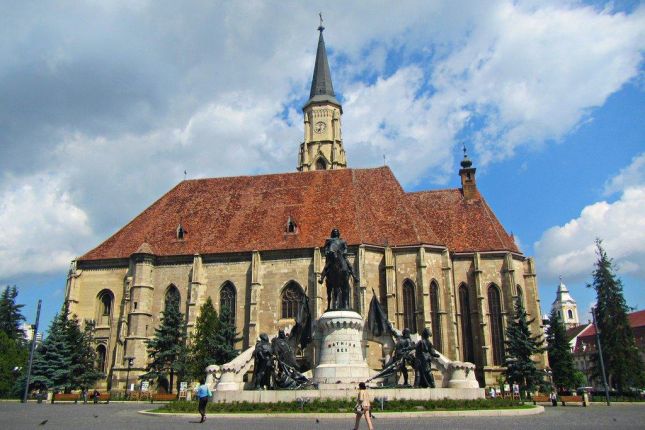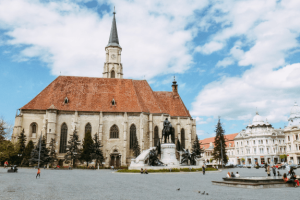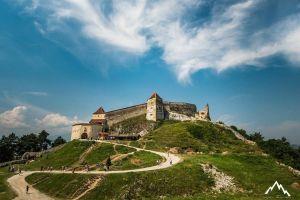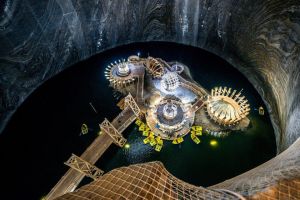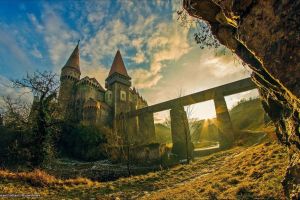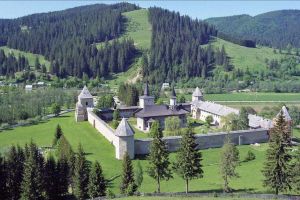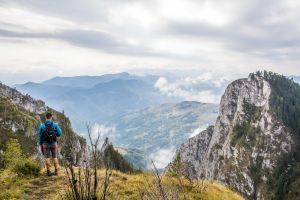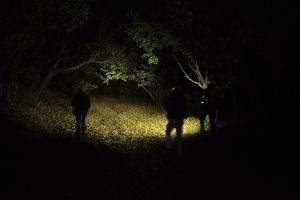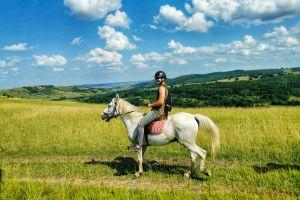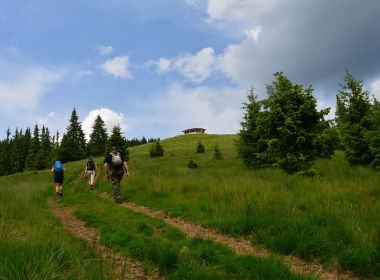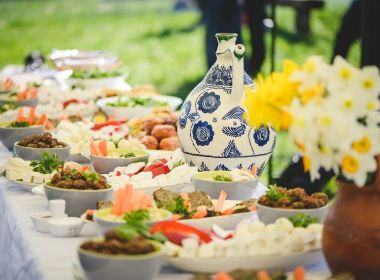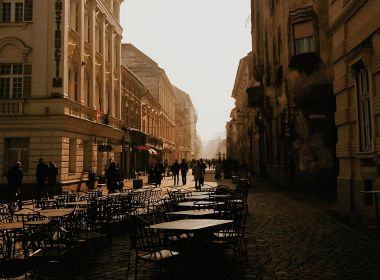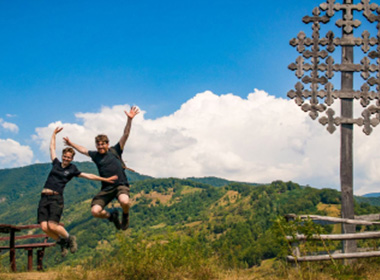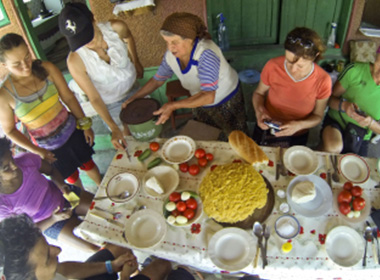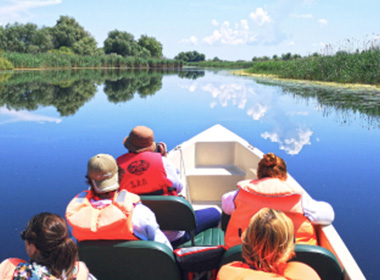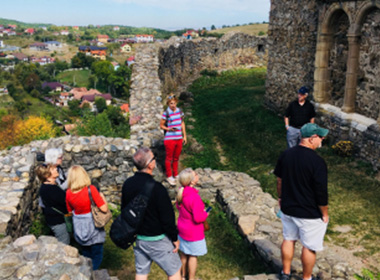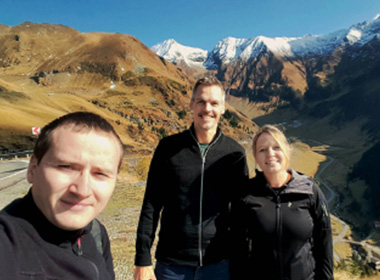35+ Best Things to Do in Cluj-Napoca & Places to Visit
Cluj-Napoca (or simply Cluj) is Romania's second-largest city with a vibrant personality: young-hearted and always up to something, a major cultural and university hub full of creative energy and good vibes!
With a mix of medieval landmarks, historical sites, architectural jewels, trendy urban hotspots, cobblestone streets, and numerous events, Cluj is a laid-back city where people live unrushed - despite its fantastic growth since Romania joined the European Union in 2007.
La Cluj - as locals say in Cluj - everything is slower.
It's also one of the most visited cities by tourists since it's ideally located in Central Romania which makes it a good base to explore the famous regions of Transylvania, Maramures, and Bucovina. And you'll find lots of low-cost flights from all over Europe to get here!
- check our practical travel guide on how to visit Romania for the first time to make planning your trip easier
In this Cluj-Napoca travel guide we listed over 35 of the best things to do in Cluj, popular attractions for day trips in Cluj county, local favorites as well as lesser known sights and activities you should consider.
Table of contents
- What makes Cluj Napoca worth visiting?
- How to discover the best places to visit in Cluj Napoca
- 1. Start exploring Cluj from Avram Iancu Square
- 2. Admire the architectural mix of Cluj-Napoca
- 3. Take a stroll on the main street, Eroilor Boulevard
- 4. Visit Union Square and its landmarks
- 5. Enjoy nature in Central Park
- 6. Discover the interwar architecture of Cluj and enjoy Somes River
- 7. Admire the city from Cetatuia Hill
- Thirsty for culture?
- 8. Taste the rural life at the Romulus Vuia Ethnographic Park
- 9. Check Romanian aesthetics at the Ethnographic Museum of Transylvania
- 10. Visit the National Museum of Transylvanian History
- 11. Admire the art at the Cluj National Art Museum
- 12. Discover the oldest building in Cluj: Matthias Corvinus House
- 13. Take your time to visit small art galleries
- 14. Go to the artisan fares to meet local craftsmen
- 15. Visit Cluj during cultural events
- 16. Visit one of oldest still-in-service churches: the Franciscan Church
- 17. Admire Byzantine architecture at the Assumption Cathedral
- 18. Go to a concert at the Reformed Church
- 19. Visit the charming Face-to-Face Greek-Catholic Cathedral
- 20. Smell the beauty at the Botanical Garden
- Day trips from Cluj-Napoca to visit Transylvania
- 21. See the #1 underground attraction in the country: Turda Salt Mine
- 22. Visit the most authentic medieval castle in Transylvania: Corvin Castle
- 23. Make a stop at the Alba Iulia Citadel
- 24. Visit UNESCO-listed sites: Sighisoara Citadel and fortified Saxon villages
- 25. Go deeper, and discover traditional regions of Romania
- 26. Go on a hike in the Apuseni Mountains
- 27. Visit a traditional region in Apuseni Mts
- 28. Admire a natural reserve: Turda Gorges
- 29. Go to the charming village of Rimetea and hike to Piatra Secuiului
- 30. Enter a space of mysteries at the Hoia Baciu forest
- 31. Visit the popular Banffy Castle
- 32. Go horse riding in the hills of Transylvania
- Where to go out in Cluj-Napoca. Best restaurants in Cluj
- 33. Enjoy a tasty blend of fancy and classic flavours
- 34. Taste traditional Romanian food
- 35. Discover the specialty coffee culture in Cluj
- 36. Go out for drinks in Museum Square
- 36. Mingle with students on Piezisa Street
- How to get to Cluj-Napoca
- Public transportation in Cluj-Napoca. From airport to city center
- Where to stay in Cluj-Napoca
What makes Cluj Napoca worth visiting?
Why do locals all over Romania talk about the friendly people and easy-going vibe of Cluj-Napoca?
Simple: it's a bustling university city with a creative spirit, a down-to-earth attitude about work, and a 'chill' vibe - in contrast with the hustle and bustle, 'always in a rush' people in Bucharest.
Locals here are very friendly and it will be easy to interact with them – on a walk through the city, in a coffee shop serving specialty Ethiopian single origin or at one of the famous Romanian festivals taking place in Cluj like the massive Untold festival, the alternative Electric Castle or Transyilvania International Film Festival where some of the best Romanian movies have premiered.
There are many things to do in Cluj because the city is the unofficial capital of Transylvania. Historically, Cluj has always been a cultural and political center in Romania.
Romanians, Hungarians, Germans, and other minorities, with all their customs, faiths, ways of life, and typical dishes have peacefully coexisted here for centuries. So learning about local culture is one of the best things you can do here.
Then there's also Central Park, a hotspot for local life, the Botanical Garden, the best in Romania, and Cetatuia Hill with its great view of the city, to satisfy your needs for 'nature in the city.'
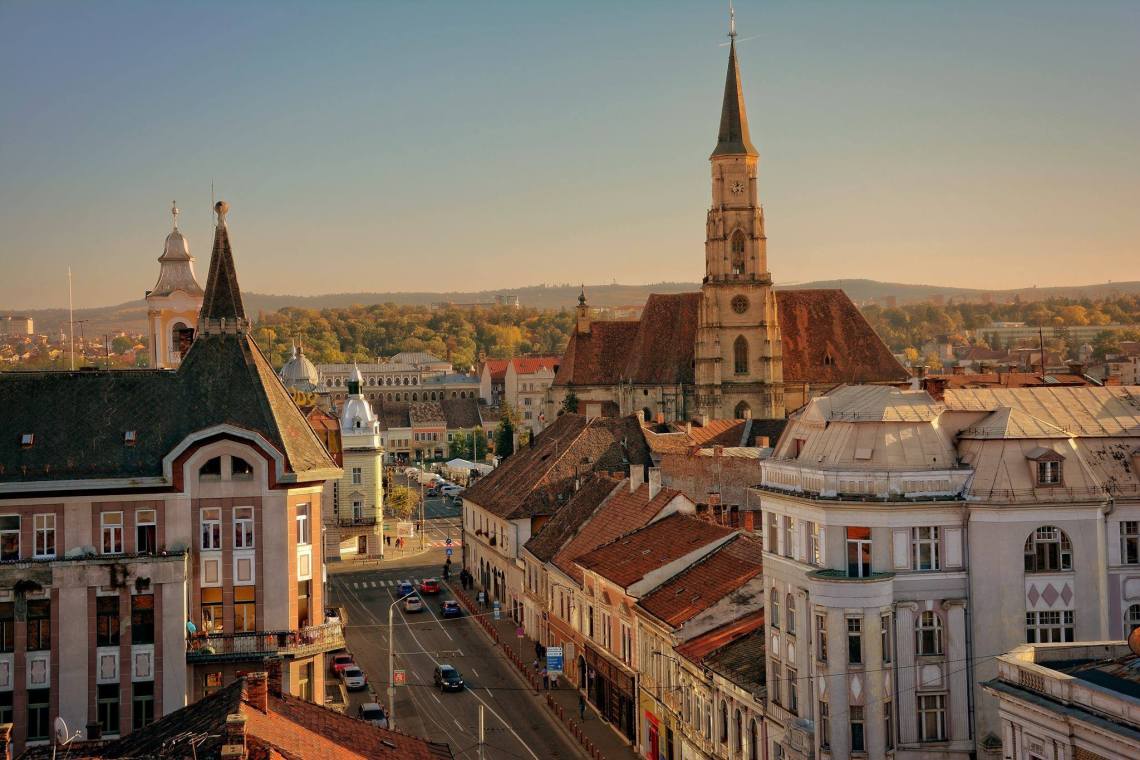
How to discover the best places to visit in Cluj Napoca
The best way to do some sightseeing and explore Cluj is on foot because the city's landmarks and best places to see are located close to each other in the city centre. In fact, the city’s layout is a huge East-West axis so I suggest you start your walk either from Central University Library or Avram Iancu Square.
1. Start exploring Cluj from Avram Iancu Square
If you decide to start exploring Cluj starting from Avram Iancu Square, you will notice the Orthodox Cathedral which you can visit, and the statue of Avram Iancu, a major figure in the history of Transylvania.
2. Admire the architectural mix of Cluj-Napoca
The beautiful historic buildings opposite the Orthodox Cathedral and the statue of Avram Iancu are the National Theatre and Romanian National Opera House with a superb architectural mix of Renaissance-Baroque-Secession, common for many important buildings in Western Romania thanks to Habsburg and Hungarian influences.
3. Take a stroll on the main street, Eroilor Boulevard
Continue your walking tour on the wide and busy Eroilor Boulevard the main street in Cluj where locals love to go for a walk and hang out. You'll also pass by some of the city's oldest buildings, like the Old Town Hall. Many of them date back to the 16th century when Cluj experienced an economic and cultural awakening and they are top attractions for tourists due to their unique architecture.
Local tip:while here, take your pick from some of the most popular cafes and bistros which make for a great place to experience the city's local life: Olivo, Koffer, DOT, A la Tarte, Meron or Eggcetera
If you are into architecture then you'll notice how the style changed from constructions that survived from the Renaissance period to the more elegant 19th-century buildings found in the city center and around major squares. Great spots for those passionate about aesthetics, history, and photography!
4. Visit Union Square and its landmarks
Continue your walking tour until you reach Union Square (Piața Unirii), a lovely place characterised by 18th century and 19th-century buildings, with its massive St. Michael's Church, an impressive Gothic landmark and one of Cluj's most popular tourist attractions, and the imposing Matthias Corvinus monument in the center.
Union Square is a place full of history. Here, you can also find the Continental Hotel, the place that housed German troops during the Second World War.
Lots of local events and festivals take place in the main square but if not - enjoy the open space and take a look around: no one here is in a rush, locals smile, go slow, and like to grab their coffee and enjoy it in the sun.
And so should you!
Local tip:notice the details of the imposing statue of Matthias Corvinus, a famous Hungarian king born in Cluj Napoca (then Kolozsvár) in the 15th century.
The history of Hungary and Romania is intertwined beyond administrative borders or nationalist rhetoric. If you want to learn more about the history of Cluj-Napoca and Transylvania, one of our guides has a degree in history and is eager to show you around and tell you more:
5. Enjoy nature in Central Park
Next on your walk should be Central Park (Parcul Central) where you'll see people laying on the grass, hanging hammocks and enjoying life. Go for a walk around Chios Lake too. If there are no local fares in Union Square, maybe they're here, especially during the Summer months.
The park is closed during the Untold festival and I generally don't recommend you visit Cluj Napoca during that time since it's super crowded and expensive.
Pro tip:at the end of Central Park towards Cluj Arena you'll find local stalls that sell typical Romanian street food: langos (fried dough topped with sour cream, cheese, and garlic sauce), kurtos kalac (sweet bread with topping), cotton candy (a staple of Romanian childhood) and machine-made instant icecream, my favorite :)
6. Discover the interwar architecture of Cluj and enjoy Somes River
Across the road, near the Mill Canal, you'll find lots of well-preserved houses, with beautiful architecture, built between the Two World Wars. If you continue your walk you'll eventually reach the Somes River promenade, another local life hotspot.
7. Admire the city from Cetatuia Hill
If you want a great view over this beautiful city you should cross the river and go up to Cetatuia Hill the perfect place for a panoramic view of the entire city and surrounding hills! You can get there on a short hike going through Cetatuia Park but also by grabbing a taxi. And sunsets here are spectacular and you can enjoy them with a drink at Pergola Cafe.
Thirsty for culture?
Then you're in the right place. Thanks to its rich multicultural and humanistic history, Cluj-Napoca was always a place renowned for its culture, and interest in humanities and arts. You'll often visit places including restaurants and cafes where you'll get a sense of how important culture is for one of Romania's biggest cities.
Here's a short list of the best things to do in Cluj for those interested in art and culture:
8. Taste the rural life at the Romulus Vuia Ethnographic Park
The Romulus Vuia Ethnographic Park is the first open-air museum in the country where you will get a taste of rural Transylvania: traditional houses, rural technical installations and wooden churches, and lots of green spaces where you can even chill or have a picnic (closed November - April).
9. Check Romanian aesthetics at the Ethnographic Museum of Transylvania
The Ethnographic Museum of Transylvania is the in-door brother of the above, where you'll discover clothing, household and decorative items, lots of pictures, and literature from the past times.
10. Visit the National Museum of Transylvanian History
The National Museum of Transylvanian History has a focus on history and archeology, with objects and artefacts dating back to our ancestors, the Dacians. This is one of the best museums in Romania to visit if you want to understand more about the complex history of Transylvania.
Cluj is also known for its artsy vibe where, besides classical arts, contemporary and modernist artists are also featured. Also, photo exhibitions are regularly on display in the main squares or even in cafes. Here is a list of the best places for art lovers.
11. Admire the art at the Cluj National Art Museum
Cluj-Napoca Art Museum, located next to the University of Arts, hosts various art exhibitions all year long. Explore a diverse collection of over 12,000 paintings, sculptures, graphic arts, and decorative pieces spanning from the 16th to the 21st centuries.
Situated in Unirii Square, the museum is not only a treasure trove of artistic expressions but also a remarkable architectural marvel.
12. Discover the oldest building in Cluj: Matthias Corvinus House
The Matthias Corvinus House (Casa Matias) stands as the birthplace of Matthias Corvinus, the King of Hungary, and ranks among Cluj-Napoca's oldest structures.
Built in the 15th century with Gothic influences, this historic house has served various roles throughout its existence, evolving from a residence to a prison, hospital, and museum. From Union Square go for a walk towards Museum Square and you can't miss it.
13. Take your time to visit small art galleries
Cluj also has its list of small art galleries, such as Iaga Contemporary Art, which hosts about six exhibitions a year. Other small galleries you can visit are Plan B, Bazis Gallery, or Lateral ArtSpace. These galleries exclusively focus on contemporary art, providing art enthusiasts with distinctive perspectives and immersive experiences.
14. Go to the artisan fares to meet local craftsmen
Lots of events and local artisan fares (eg. ZAIN) are frequently organised in Cluj-Napoca, where artists and craftsmen are promoted. Here, you have the opportunity to acquaint yourself with local craftsmen, sample authentic products, and explore items that beautifully blend tradition with modern elements.
15. Visit Cluj during cultural events
Cluj hosts many cultural events, such as the Transylvania International Film Festival (TIFF), Jazz in the Park and others. On the official tourism website of Cluj-Napoca, Visit Cluj, you can find a list of events scheduled for the next period.
And since we can't separate Transylvanian culture from its multi-faith background, there are some religious sights worth visiting besides the Orthodox Cathedral and Saint Michael's Church. All of them are located in the city center.
16. Visit one of oldest still-in-service churches: the Franciscan Church
Built between 1260 and 1290, the Franciscan Church stands on the grounds of an earlier Catholic church, destroyed during the Tatar invasions in 1241. Nestled in Museum Square, formerly known as Little Square to distinguish it from Market Square, this location revealed remnants of the Roman city during archaeological excavations. Inside the church, intricate sculptures and an ornate altarpiece grace the interior. The building is classified as a historical monument.
17. Admire Byzantine architecture at the Assumption Cathedral
The Assumption Cathedral, also known as the Dormition of the Theotokos Cathedral, is a great example of Byzantine architecture adapted to 20th-century construction exigences. Completed in 1933, it stands as the largest Romanian Orthodox church in Cluj.
Its architectural marvel unfolds in the Romanian Brâncovenesc style, seamlessly blending Renaissance and Byzantine influences. Nestled in Avram Iancu Square, it shares the cultural landscape with the Cluj-Napoca National Theater and the Avram Iancu Statue.
18. Go to a concert at the Reformed Church
The Reformed Church in Cluj-Napoca, located on Mihail Kogălniceanu Street, is a captivating structure characterized by its imposing Gothic architecture and a profound sense of intimidating strength. Renowned for its exceptional acoustics, the church hosts numerous concerts where musicians take advantage of the unbeatable sound quality.
19. Visit the charming Face-to-Face Greek-Catholic Cathedral
The Face-to-face Greek-Catholic Cathedral stands as one of the most beautiful churches in Cluj, and it is my favorite, since I got married here :)
Constructed in the Baroque style, the church is adorned in yellow and features a tall tower, reaching a height of 28 meters, which imparts an ancient charm along Eroilor Boulevard.
20. Smell the beauty at the Botanical Garden
You should also consider visiting the Botanical Garden in Cluj-Napoca, the largest and, according to some, most beautiful in Romania. Besides the Rosarium in front of the building, a rose garden with many species, it has many unique sights like the Japanese garden and the Roman garden, both exquisite, which make this an interesting place to visit.
Springtime is the best time to visit it since over 40.000 tulips are on display, making it one of the biggest tourist attractions in Cluj. Find out more about visiting hours on the official website.
Day trips from Cluj-Napoca to visit Transylvania
Thanks to its location and well-connected public transport, the city is a very good base for the many things to do in Transylvania and for visiting places harder to get to from Bucharest or other parts of the country. So going on short trips to discover Romania's main attractions is one of the best things you can do while in Cluj!
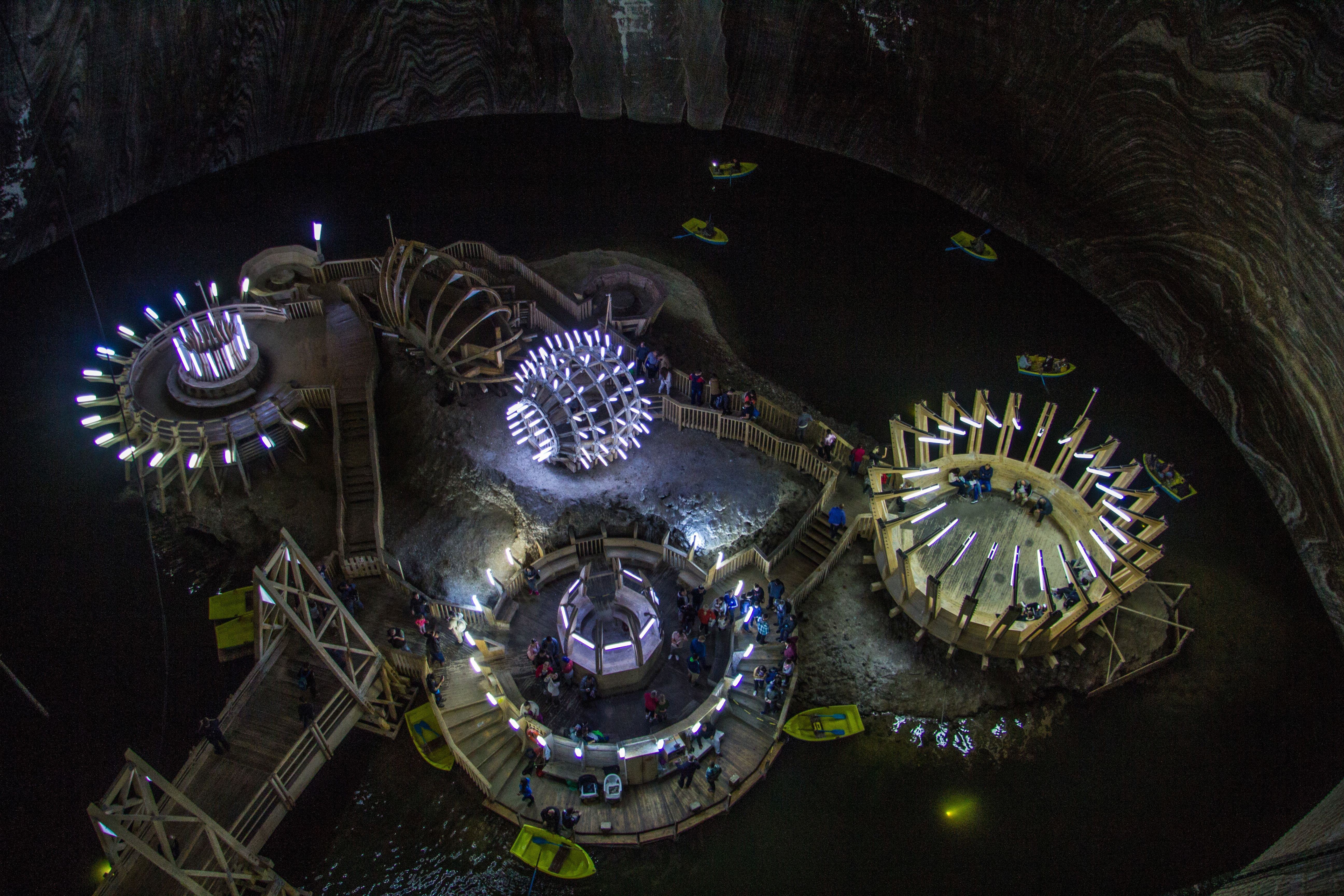
Turda Salt Mine is one of the best attractions you can visit near Cluj-Napoca
21. See the #1 underground attraction in the country: Turda Salt Mine
Undoubtedly the main attraction near Cluj-Napoca is Turda Salt Mine. Business Insider named Salina Turda as the #1 underground location to visit with beautiful scenery thanks to artfully placed lighting installations. And with a lot of activities for visitors, such as table tennis or mini golf.
Besides breathing salty air which is good for your lungs, there are some awesome things you can do down there too: imagine a 2,000-year-old mine dating back to Roman Empire times with caverns so huge an underground Ferris wheel could be installed! Or boat rides on an underground lake. Wait... what?
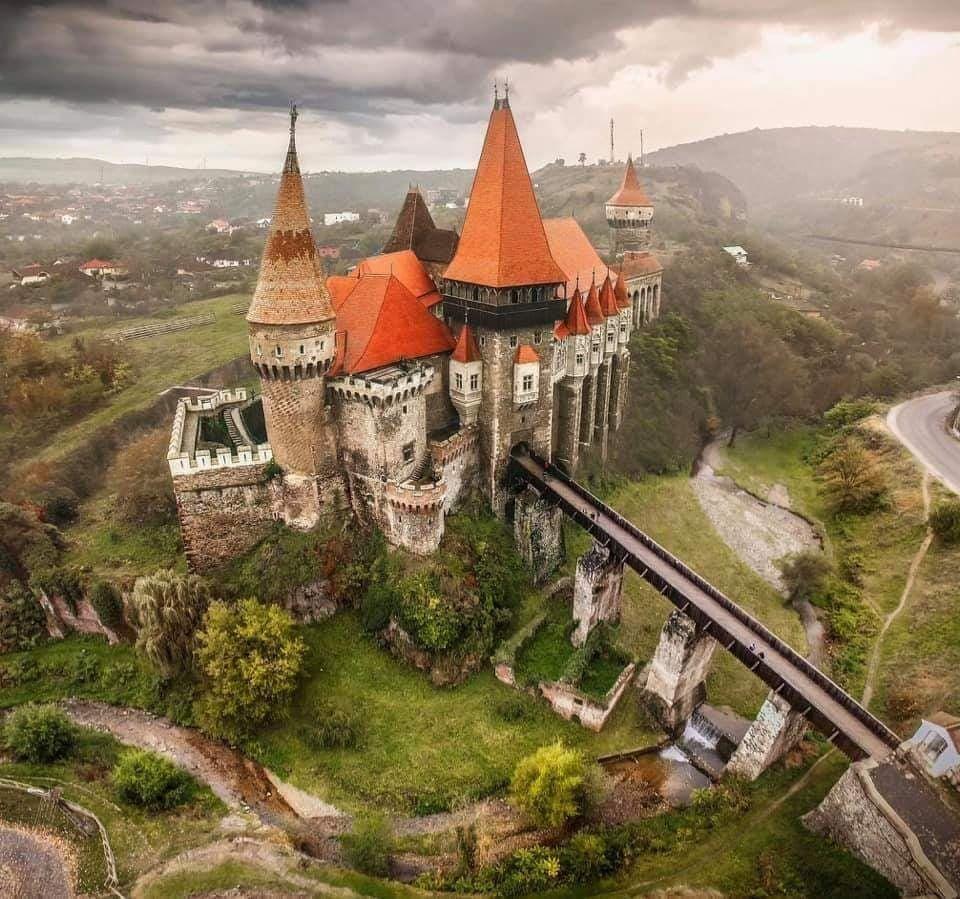
Corvin Castle, the best preserved medieval castle in Eastern Europe
22. Visit the most authentic medieval castle in Transylvania: Corvin Castle
Corvin Castle, a 600-year old Gothic castle may not be the most famous castle in Transylvania. It's hard to compete with Bran Castle aka Dracula's Castle close to Brasov! But in our opinion, it's the most interesting and authentic medieval castle in Transylvania, with real stories and fascinating legends. Unlike Bran Castle (4h away), Corvin Castle can be easily visited on a day trip from Cluj-Napoca.
23. Make a stop at the Alba Iulia Citadel
On your way to Corvin Castle, you can stop at Alba Iulia Citadel. The spiritual capital of Romania where the Great Union of 1918 took place when Transylvania joined Wallachia and Moldova, this five-point citadel dating back to the Roman Empire is worth a short trip.
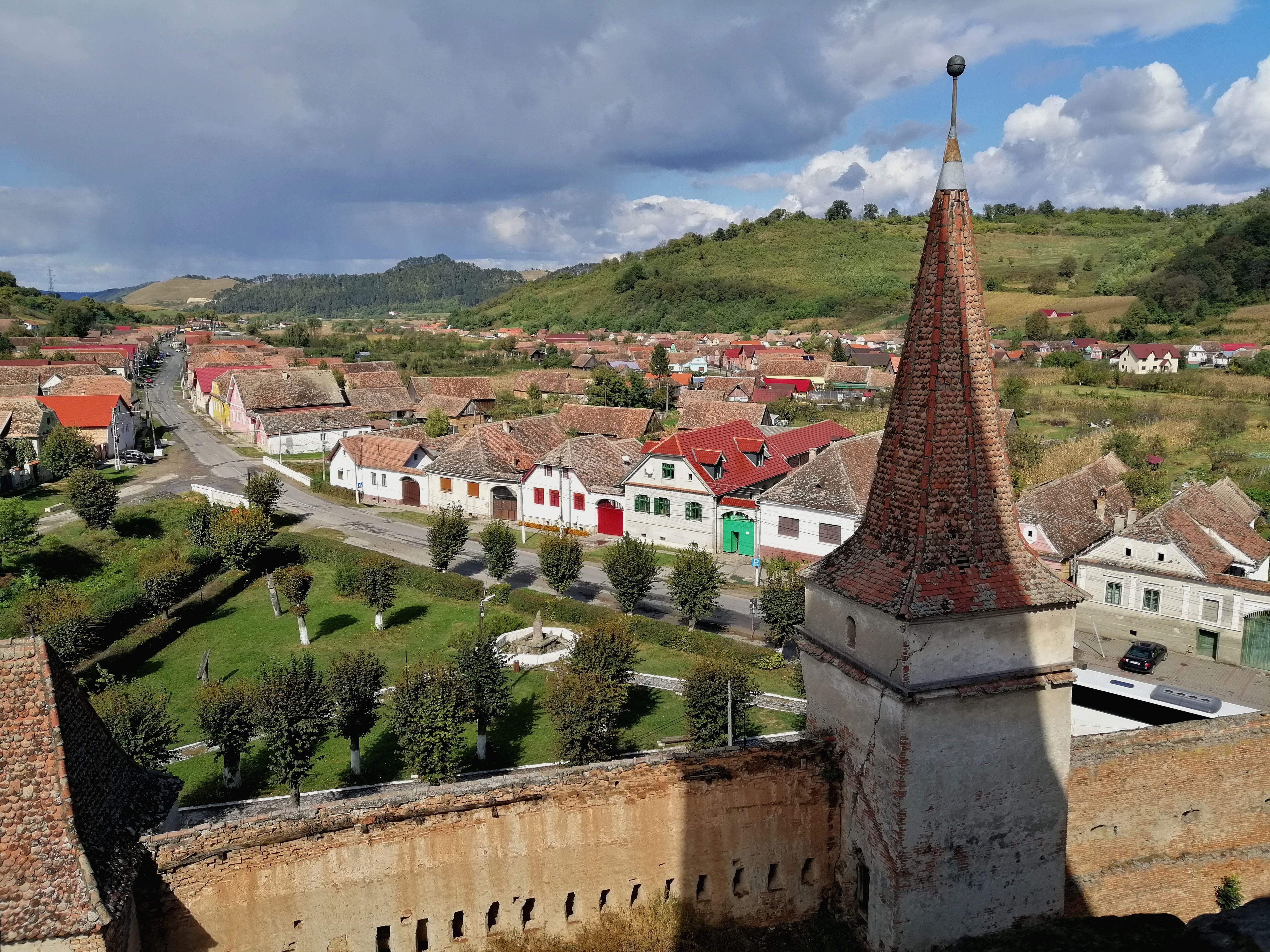
A typical Saxon village in Transylvania
24. Visit UNESCO-listed sites: Sighisoara Citadel and fortified Saxon villages
Among the other most popular places for tourists to visit Transylvania are the famous Sighisoara Citadel and the Saxon villages with fortified churches all part UNESCO heritage. On a day trip to these sights, it will be easier to understand the complex Transylvanian history and culture, while admiring the beautiful views of the region, famous for its mellow hills and picturesque village life.
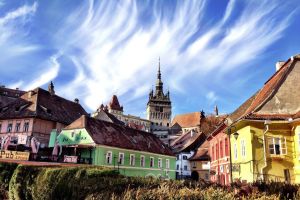
Tour of Transylvania's Countryside: Sighisoara Citadel & Fortified Villages
Start from: Cluj-Napoca
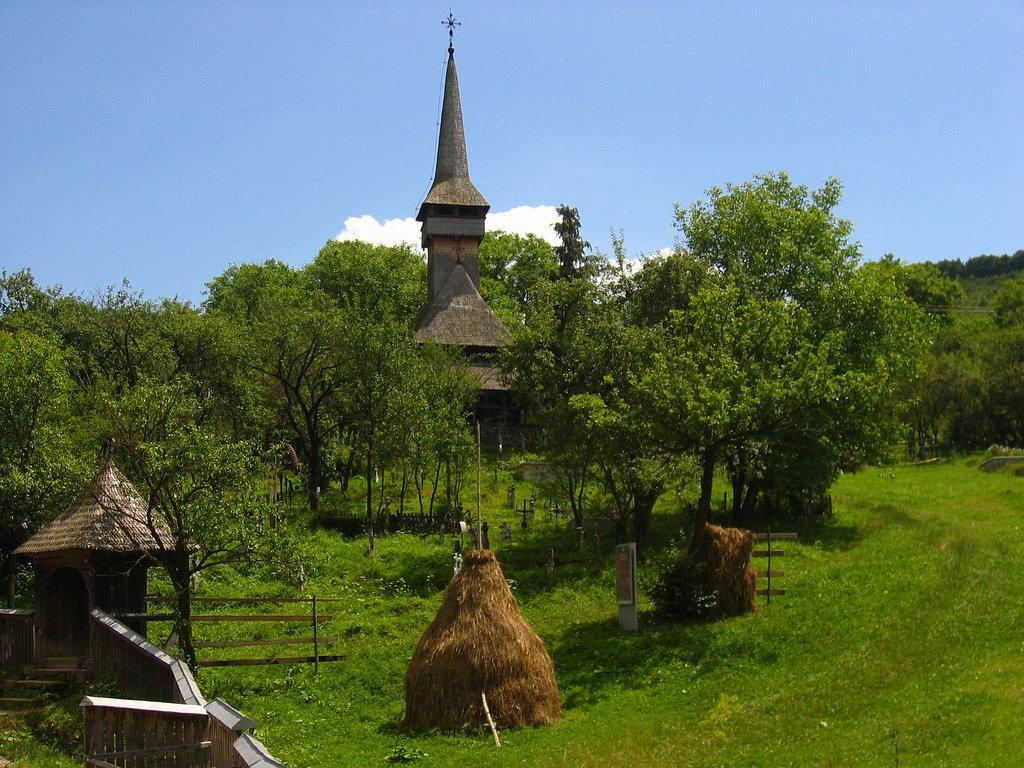
25. Go deeper, and discover traditional regions of Romania
If you're interested in authentic Romanian culture and want to experience the traditional rural life for which our country is so famous for, then Cluj-Napoca is the perfect place to go on trips to discover the traditional regions of Maramures (N-W) or Bucovina (N-E).
Both are equally considered the most authentic and ethnographically representative regions of Romania. They're famous for their local crafts (wood caving, egg painting), and for their many customs and traditions kept alive by locals, including how they dress up in folk costumes to go to church on Sunday.
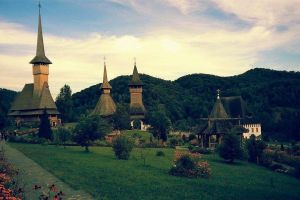
2 or 3 Days in Maramures: Wooden Churches, Traditions & Village Life
Start from: Cluj-Napoca
Besides the jaw-dropping sceneries and homegrown delicious food, each region has many tourist attractions spread across villages in the region. In Maramures you can visit the UNESCO Wooden Churches, while in Bucovina the famous UNESCO Painted Monasteries. Whatever you choose - both regions are fascinating and perfect for slow travel meaning you'll need min 2-3 full days for each one.
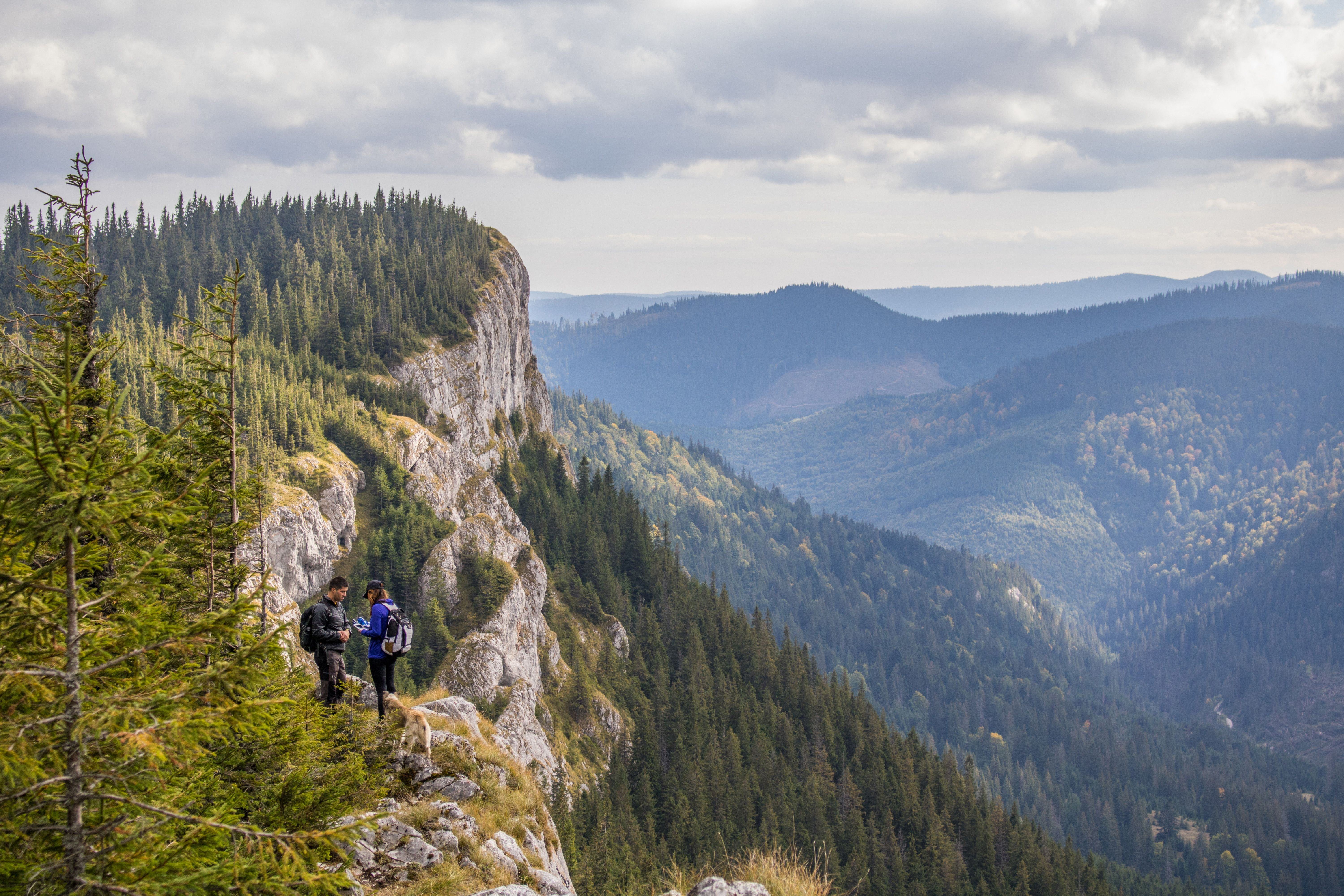
Amazing views in Apuseni Natural Park close to Cluj
26. Go on a hike in the Apuseni Mountains
One of our favorite things to do from Cluj-Napoca - that few people know about - is to go hiking in Transylvania. Our article will tell you more about Romania's huge and underrated outdoor potential.
Cluj Napoca is close to the Western Carpathian Mountains, locally known as the Apuseni Mountains. Generally considered as medium difficulty mountains, the highest peaks are Curcubata Mare at 1,849m and Vladeasa Peak at 1,836m which can be summited in a one-day hiking trip from Cluj with our experienced mountain guide.
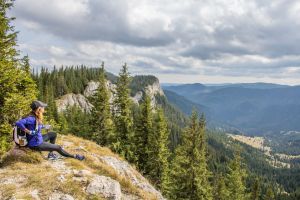
1 or 2-day Hiking Tour from Cluj: Wild Trails in Apuseni Natural Park
Start from: Cluj-Napoca
Besides the numerous hiking trails for all difficulty and experience levels, there are lots of natural attractions too such as Scarisoara Ice Cave, Rusty Ravine, Bride's Veil Waterfall, White Cliffs (Pietrele Doamnei) and Scarita Belioara Reserve.
These can be seen on hiking day trips or multi-day trips that will also take you through picturesque villages. And there are over 150 caves most of which you can visit and some perfect for caving speleological exploration!
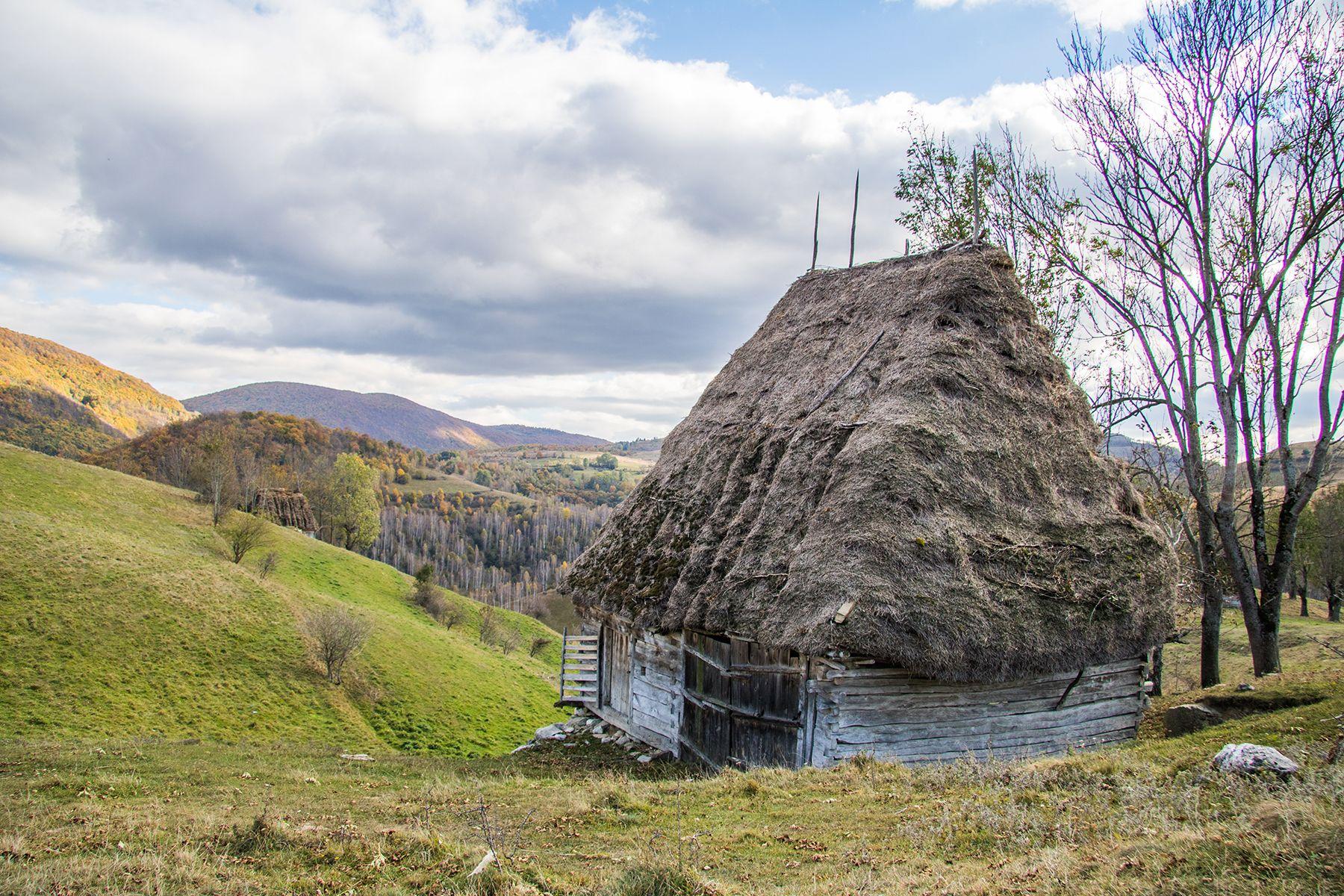
27. Visit a traditional region in Apuseni Mts
And in Apuseni Mountains specifically in Apuseni Natural Park there is another ethnographically representative region known as Țara Moților where locals live as they used to decades ago, undisturbed by modern civilisation. So besides hiking and visiting natural attractions, this is the best place to experience life in rural Transylvania authentically.
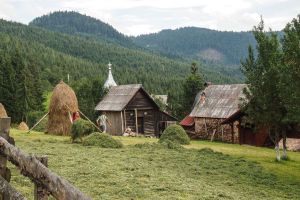
2 Day Hiking in Apuseni Natural Park: Culture & Local Life
Start from: Cluj-Napoca or Sibiu
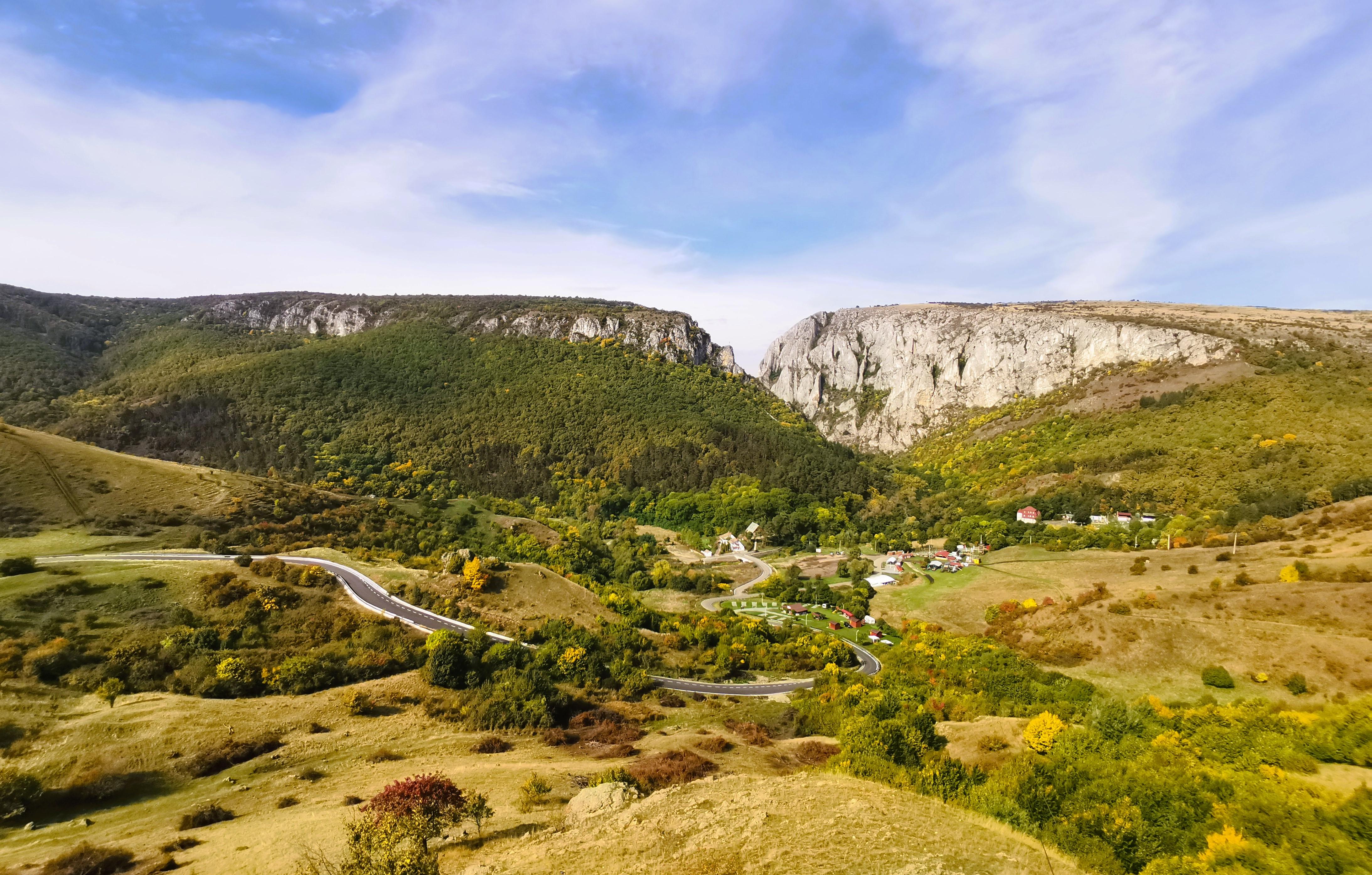
28. Admire a natural reserve: Turda Gorges
Other popular natural attractions near Cluj are Turda Gorges (Cheile Turzii) a superb area that will close you off from civilisation with fresh air and lots of vegetation. A hiking trip in Turda Gorges to the top will last about 4h but you can also learn via ferrata with our specialist guide if you're up for it.
For a nature lover, this is the perfect place to be.
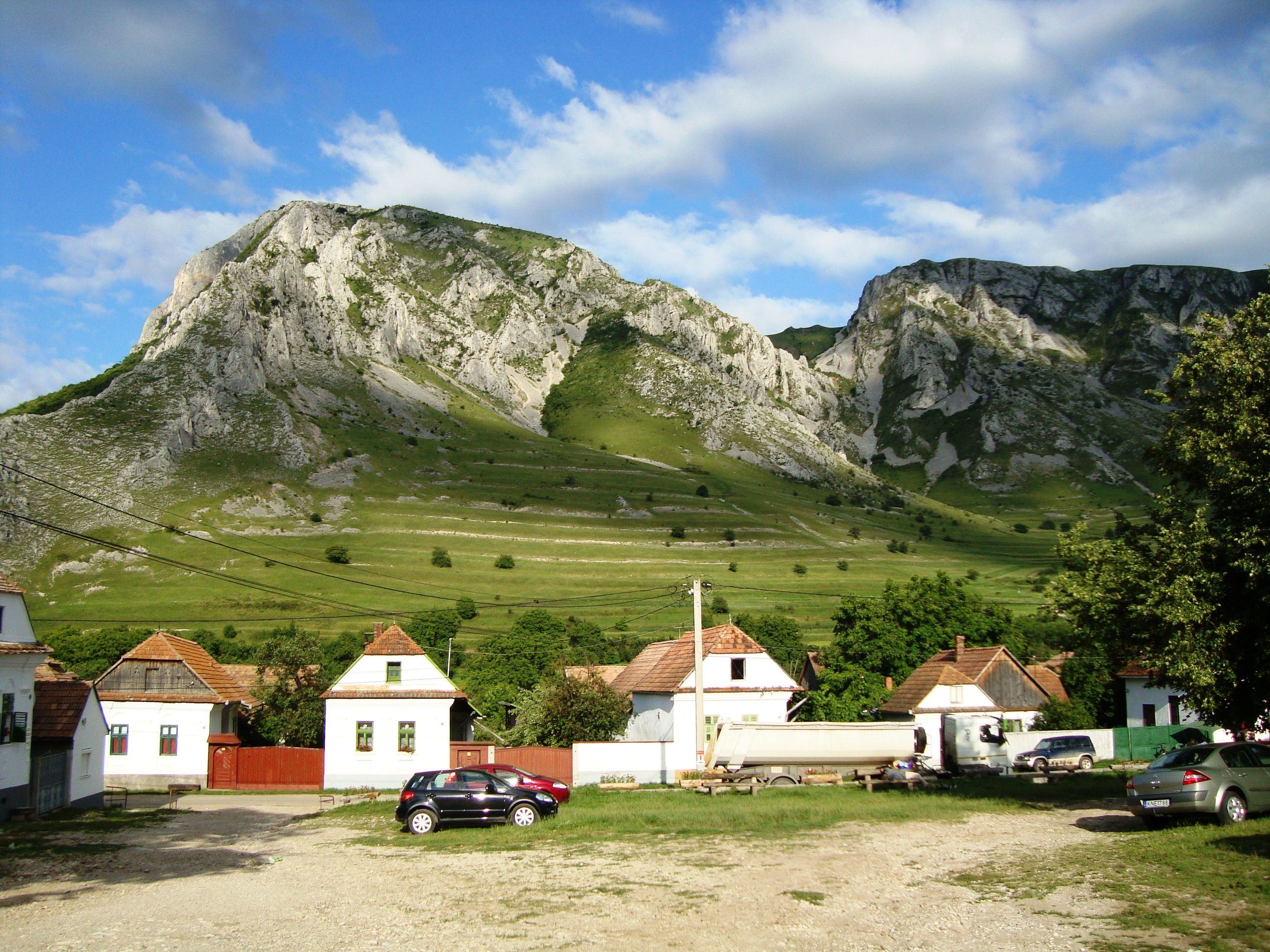
29. Go to the charming village of Rimetea and hike to Piatra Secuiului
Another popular route - though more difficult - is Szekler's Stone (Piatra Secuiului) in the charming ethnic-Hungarian village of Rimetea. Towering and imposing, this hiking day trip will be rewarding for sure.
Local tip:you may read about Tarnita Lake outside of Cluj; but other than private houses, there's no real infrastructure for tourists to enjoy the area - so I wouldn't recommend you bother going there.
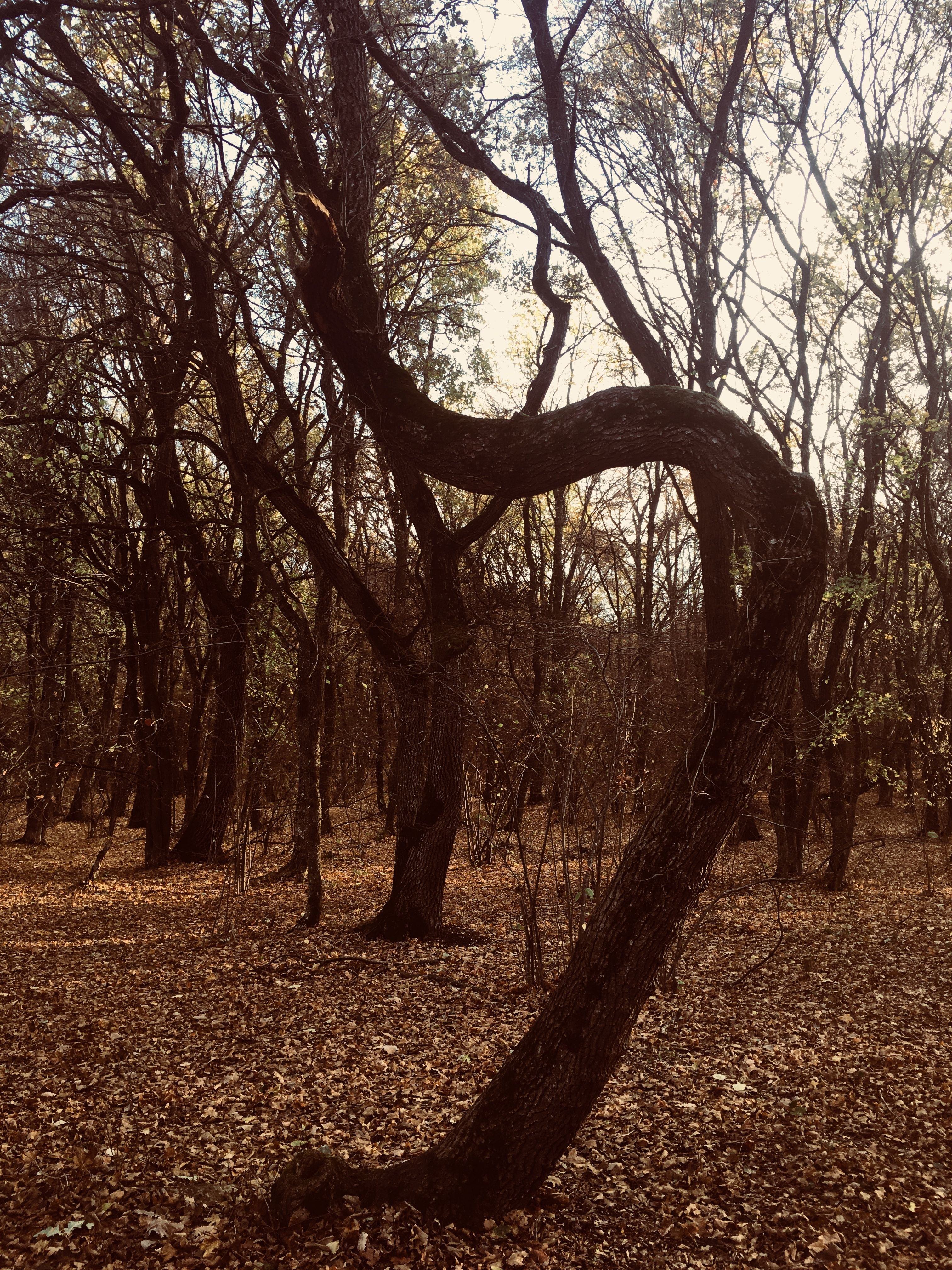
The haunted forest of Romania: Hoia Baciu
30. Enter a space of mysteries at the Hoia Baciu forest
Now time for something completely different - did you know there is a forest near Cluj-Napoca said to be haunted?
It's called Hoia Baciu after a shepherd disappeared here without a trace with his entire flock. It's also where UFO sightings were photographed 50 years ago, with strange readings recorded ever since. And the vegetation in the forest is... weird. Like, there's a perfectly round huge clearing where grass doesn't grow above a certain level. And, obviously, no one mows it!
I know what you're thinking - hard to believe! Same for me until I went with our guide who is super passionate about this attraction on a tour in Hoia Baciu forest with special measuring equipment. I like mysteries and this is by far a unique thing to do and an unusual place in Cluj-Napoca!
Near Hoia Baciu Forest, you can also find the oldest human settlement near Cluj and the oldest in Transylvania, dating from the Neolithic Period, Gura Baciului.
31. Visit the popular Banffy Castle
Bánffy Castle, located in Bonţida near Cluj-Napoca, stands as an architectural marvel with influences spanning Renaissance, Baroque, Neoclassical, and Neogothic styles. Owned by the Hungarian Bánffy family, the castle has been repurposed, housing an Art Cafe since 2001, while the Trust has established an educational center in the Miklós building. Various parts of the castle, including the former chapel, stables, and main building, serve as venues for cultural events and programs.
In recent years, Banffy Castle has emerged as a host for music festivals, which turned it into a popular spot near Cluj. If you're thinking of going to Electric Castle, one of Romania's most popular events - don't think twice!
Taking place on the Banffy domain, this festival showcases a dynamic blend of electronic music and artists spanning various genres, such as electronic, punk-rock, alternative, D'n'B, trap, funky disco and more.

32. Go horse riding in the hills of Transylvania
If you're a fan of the saddle - you'll love this experience! Close to Cluj one of our guides - passionate about horses - knows a family who breeds Huluc horses, an authentic Romanian mountain breed.
Back when Transylvania was under Austrian or Hungarian domination, Romanian outlaws on horseback called haiduci would be famous for their disruptive incursions on foreign officials.
So wether you want to learn more stories about them, or just explore picturesque hills and typical villages on horseback, you'll love this.
Where to go out in Cluj-Napoca. Best restaurants in Cluj
Ok, back to normal! :)
After so much sightseeing in Cluj and on day trips, you're probably starving! The best places for that in Cluj-Napoca are Museum Square (Piata Muzeului), Union Square (though a little too touristy for our taste), and Potaissa Street. This is where you'll find the best restaurants in the city, with lots of bars, cafes, and inspiring terraces.
33. Enjoy a tasty blend of fancy and classic flavours
Blend in with locals and make some new friends. If you're looking for places to go out in Cluj-Napoca, try the fancy menu at Via Restaurant, reinterpreted traditional food at Zama, or delicious pasta at Tortelli. You can also try Casa Boema for Romanian tapas or Baracca for gourmet delicacies. Bulgakov and Casa TIFF are local favorites too.
34. Taste traditional Romanian food
If you're looking to try Romanian food beyond the typical sarmale (stuffed cabbage rolls), polenta with shepherd's cheese, papanasi (huge desert) and mititei most travel bloggers talk about - one of our guides is also a foodie.
He'll take you to the best places in Cluj to try authentic Romanian food, including a farmers' market to taste local produce and tell you what local specialties to try. We love these walk, talk & eat local experiences when visiting other cities around the world so we created one for Cluj too:

Cluj-Napoca Food Tour: Food Markets, Regional Dishes and Coffee Culture
Start from: Cluj-Napoca
35. Discover the specialty coffee culture in Cluj
Coffee lover? You're in for a treat! For almost a decade now, Cluj has been famous in the entire country for its specialty coffee culture. Popular places to try: Meron, Narcoffee, Olivo, Let’s Coffee, and Frasca - a small and cozy place that will make you feel at home and serve gentle low acid coffee.
Pro tip:Romanians love good coffee and we wrote an article with the best coffee shops in Romania covering every major tourist city
36. Go out for drinks in Museum Square
Museum Square is a perfect place to end up for drinks after dinner. For good wines try Crush Wine Bar although most hip bars will serve the best Romanian wines. Try Londoner's Pub or Hemingway's for cocktails and other great things to surprise your taste buds.
36. Mingle with students on Piezisa Street
Piezisa Street is full of bars, clubs, and street food eateries since there’s a large student campus nearby – so prepare for a long night of music, dancing, shots, and a great time! For proper clubbing, check out /Form Space and Euphoria Music Hall which usually have live concerts followed by DJ sets.
How to get to Cluj-Napoca
The best time to visit Cluj-Napoca is generally April - September when there are lots of events going on in the city. A city break of 4-5 days is enough especially if you leave 1-2 full days for day trips.
Cluj has Romania's second-largest airport which is very well connected to European cities, mostly with flights from Wizz Air. Check our guide on traveling to Romania for more info on that.
From Bucharest to Cluj-Napoca the best way is to catch an internal flight. By car it may take 7-8h and we don't recommend it (unless you break for one night in Brasov or Sibiu) because driving in Romania long distances is very tiring. There is an overnight train too which takes 10h.
Unfortunately, public transportation in Romania is not very well developed so take that into account when planning your trip.
Public transportation in Cluj-Napoca. From airport to city center
From Cluj-Napoca International Airport to the city center or Old Town area there are 2 options:
- public bus line A1E that runs every 10 min daily or 20 min during weekends between 04:30 – 24:00; as you exit the arrivals building it will be on your right; it will take you to the city center in about 26 min and finish in Piata Mihai Viteazul; you can buy ticketss from the ticket machine in the airport;
- just outside the arrivals building you'll find the official taxis waiting, all safe and scam-free; you can even pay by card (just tell the driver before getting in); from Cluj airport to the city center it will cost about 10 Euro and take 15-25 min, depending on destination and traffic (for convenience and speed, this is what we recommend)
The best way to navigate Cluj-Napoca is by foot: the main landmarks and squares are all within walking distance. For anything else, take a taxi (Daniel, Nova, City) for 3,11 Lei/ km. You can also use the ride-hailing apps Uber or Bolt and pay cash or by card.
For more info on public transportation in Cluj-Napoca check the official website here. Bus and tram tickets cost 6 Lei for two rides but I doubt you'll need to use them. Renting public bikes is, unfortunately, not available for tourists (yet).
Where to stay in Cluj-Napoca
There are plenty of places to stay in Cluj around the Old Town area and main boulevards. Check on Booking.com or Airbnb to see options and you'll find everything from hostels to high-end hotels. Prices start as low as 20 Euro/ night.
Generally, I don't recommend you go further than Piata Operei or Parcul Central since you want to be within walking distance of the city center.
***
So - that's it! All my tips on how to visit Cluj-Napoca like a local with the best things to do in the city, must-see attractions, and day trips from here.
I hope it will inspire you to come over for a quick visit – we can even grab a drink in some of the spots I mentioned and I'll tell you more about the best things to do in Romania since I'm so passionate about my job!
Your Romanian Friend
David
Places to visit
4 times a year we prepare a newsletter with local stories, places and our special insights about Romanian culture and local life that will inspire you to visit our country and have an authentic local experience. Would you like to get it?
